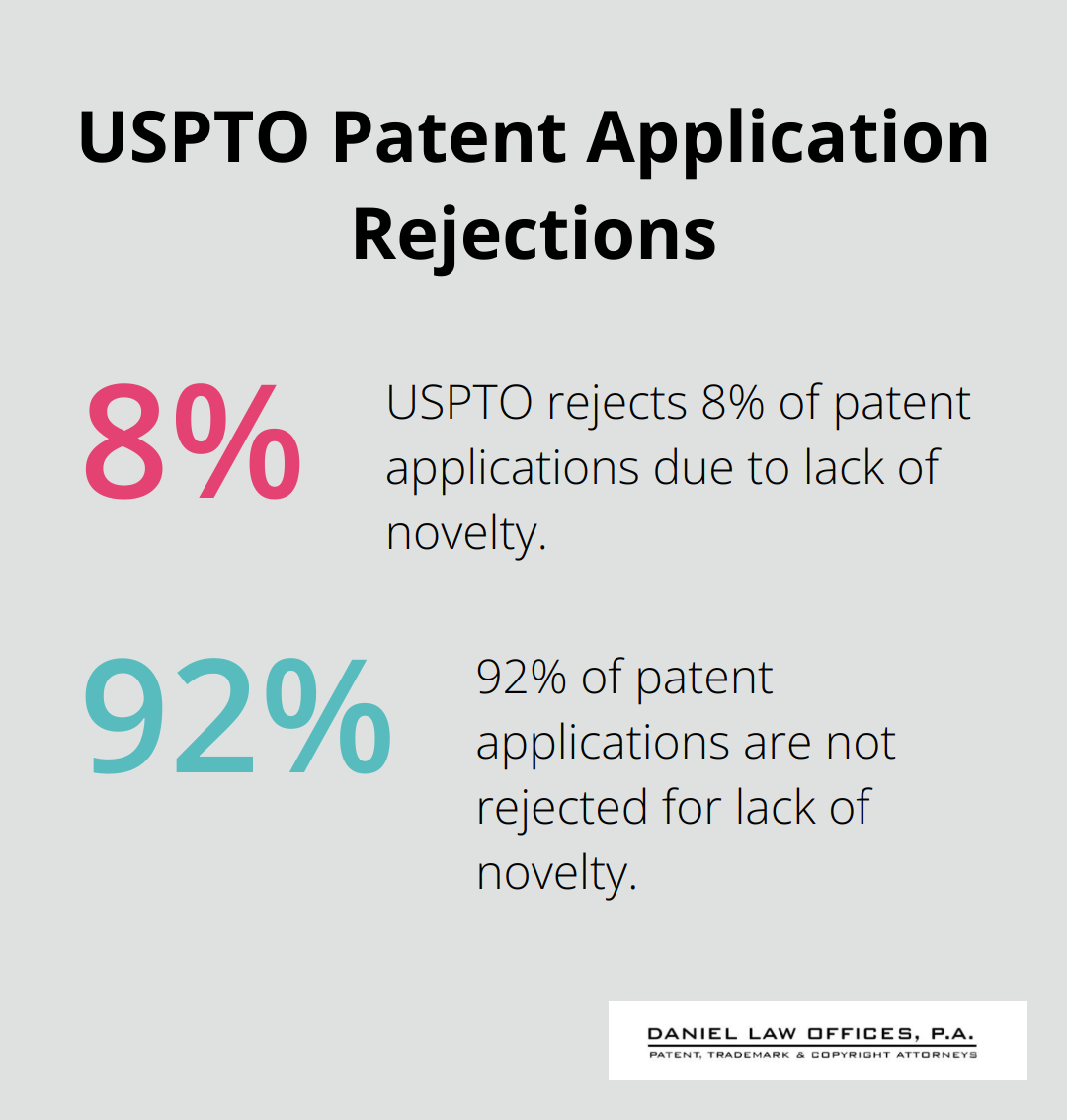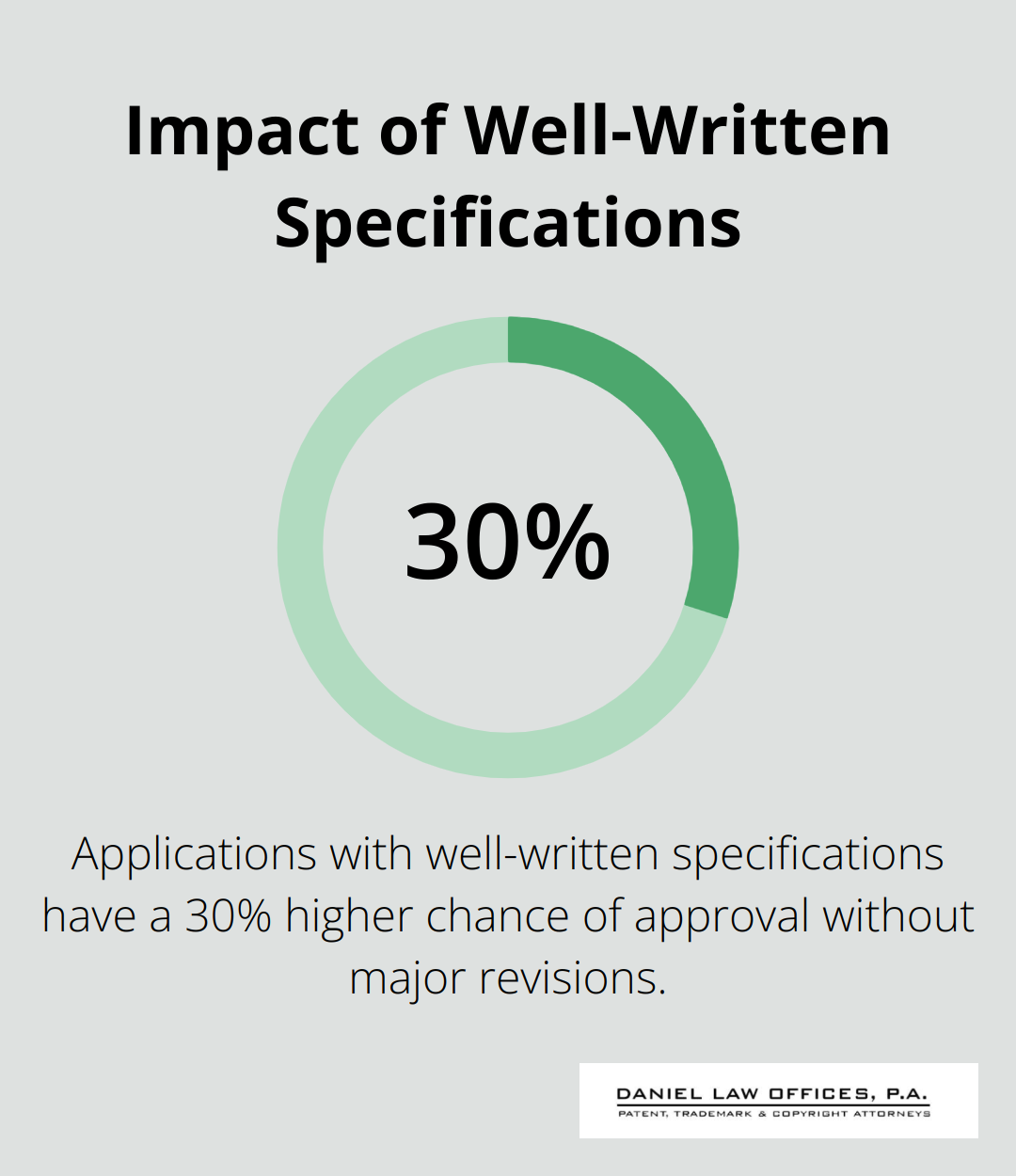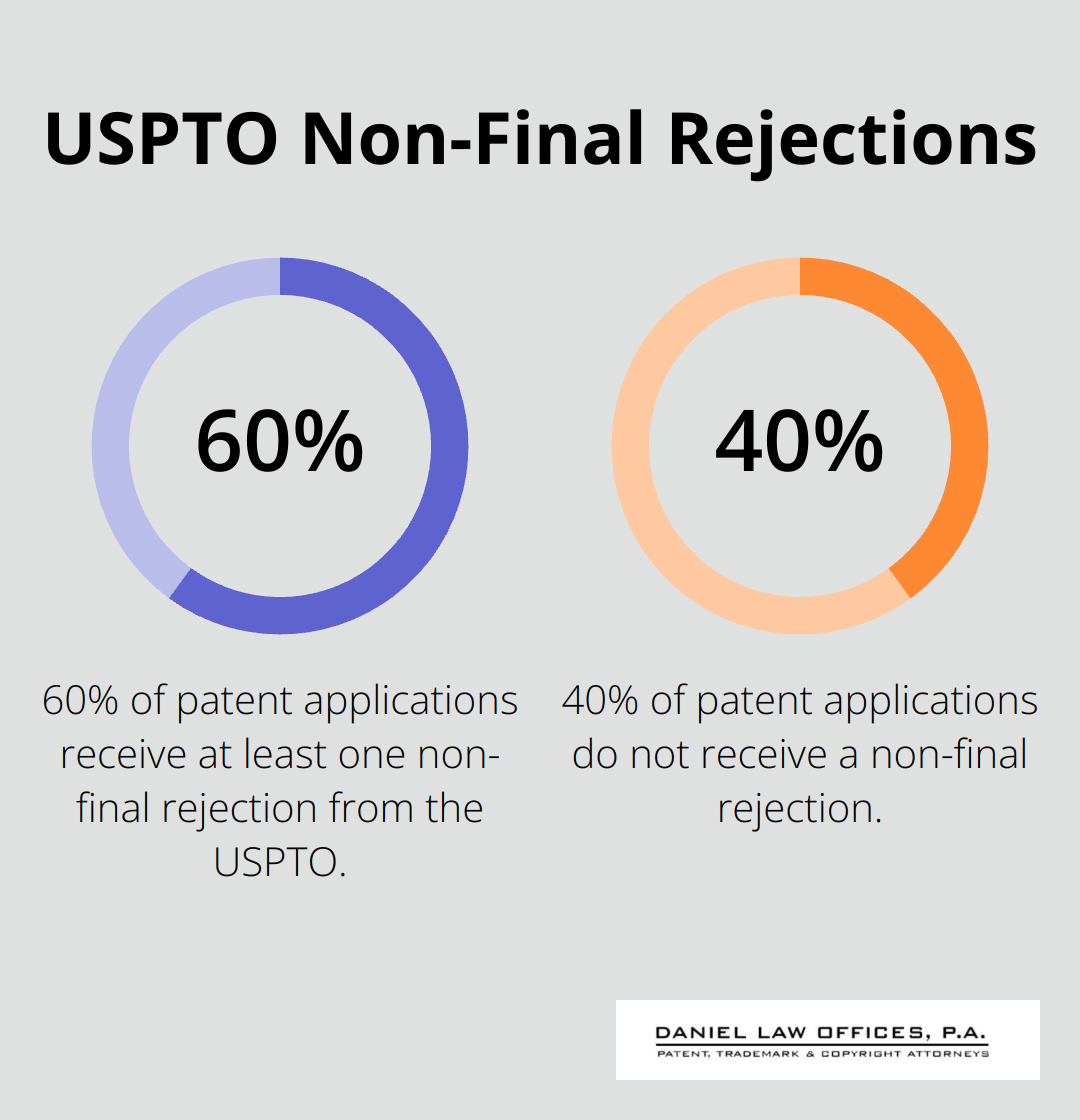Process for Filing a Patent in Orlando, Florida [Step-by-Step Guide]
Navigating the process for filing a patent can be complex, especially for inventors in Orlando, Florida. At Daniel Law Offices, P.A., we understand the importance of protecting your intellectual property.
This step-by-step guide will walk you through the essential stages of patent filing, from conducting thorough searches to preparing your application and submitting it to the USPTO. By following these steps, you’ll be well-equipped to safeguard your innovative ideas and bring them to market with confidence.
Conducting a Patent Search: The Foundation of Your Invention’s Protection
The Importance of Thorough Patent Searches
Patent searches form the bedrock of a successful patent application. This critical step helps Orlando inventors understand the existing landscape of inventions in their field. A comprehensive search can save time, money, and prevent potential legal issues down the road.

The Value of Comprehensive Searches
A well-executed patent search reveals whether your invention is truly novel. The USPTO rejects about 8% of patent applications due to lack of novelty. Identifying existing patents or published applications similar to your invention allows you to refine your idea and ensure its uniqueness and patentability.
Orlando’s Patent Search Resources
Orlando inventors have several local resources for conducting patent searches. The Orange County Library System (a designated Patent and Trademark Resource Center) offers free access to USPTO databases. Their trained staff assisted over 500 local inventors with patent inquiries in 2022 alone.
Decoding Search Results
Interpreting patent search results requires meticulous attention to detail. The claims section of existing patents defines the legal scope of protection. You should focus on the language used and how it relates to your invention. Finding similar patents shouldn’t discourage you. Instead, use this information to differentiate your invention and strengthen your application.
Professional Assistance in Patent Searches
While DIY searches are possible, professional assistance can provide deeper insights and save time. The USPTO reports that applications prepared with professional help are 10% more likely to receive approval without major revisions. This statistic underscores the value of expert guidance in the patent search process.
As we move forward to the next crucial step, preparing your patent application, the insights gained from your thorough patent search will prove invaluable. This foundational work will guide you in crafting a strong, unique application that stands out to USPTO examiners.
How to Prepare a Strong Patent Application
Craft Clear and Comprehensive Specifications
The specification forms the core of your patent application. It must provide a detailed description of your invention, explaining how to make and use it. USPTO data indicates that applications with well-written specifications have a 30% higher chance of approval without major revisions.
When you draft specifications, prioritize clarity and completeness. Describe your invention’s purpose, structure, and function. Include alternative embodiments to broaden your protection. Avoid vague language or assumptions about the reader’s knowledge.
Develop Strong Patent Claims
Claims define the legal boundaries of your invention. They are the most scrutinized part of your application. USPTO statistics reveal that applications with well-drafted claims face 25% fewer initial rejections.
Begin with broad independent claims and narrow them down with dependent claims. Use clear, precise language to describe the essential elements of your invention. Avoid unnecessary limitations that could restrict your patent’s scope.
Create Detailed Drawings and Diagrams
Visual representations play a vital role in explaining complex inventions. The USPTO reports that applications with high-quality drawings have a 20% higher approval rate without additional office actions.

Dedicate time to create clear, detailed drawings. Label all parts consistently with your written description. Include multiple views and cross-sections where necessary. These drawings become part of your patent’s public record (and can be critical in potential legal disputes).
Address Enablement and Best Mode Requirements
Your application must enable a person skilled in the art to make and use your invention without undue experimentation. It should also disclose the best mode contemplated by the inventor for carrying out the invention.
Failure to meet these requirements can lead to rejection or invalidation of your patent. In fact, 15% of patent invalidations in litigation stem from inadequate enablement or best mode disclosure.
The quality of your application directly impacts its chances of approval and the strength of protection it provides. As we move forward to the next step in the patent filing process, you’ll learn how to navigate the actual filing with the USPTO (a process that builds upon the strong foundation you’ve created with your well-prepared application).
How to File Your Patent with the USPTO
Choosing Between Provisional and Non-Provisional Applications
The United States Patent and Trademark Office (USPTO) offers two main options for patent filing: provisional and non-provisional applications. Provisional applications provide a quick, cost-effective method to establish a filing date. They remain valid for 12 months and don’t require formal patent claims. Non-provisional applications, however, are complete patent applications that the USPTO examines.
In 2022, inventors submitted 189,338 provisional applications to the USPTO. This number highlights their popularity. However, USPTO data shows that only about 50% of these led to non-provisional applications within the 12-month period.
Required Forms and Fees for Patent Filing
Orlando inventors must complete several forms and pay specific fees during the patent filing process. The Application Data Sheet (ADS) serves as a key document. It provides bibliographic data about the invention and applicant. The USPTO’s fee schedule varies based on the application type and the applicant’s entity status (micro, small, or large).
As of 2023, non-provisional utility patent applications require a basic filing fee of:
- $320 for large entities
- $160 for small entities
- $80 for micro entities
Additional fees apply for extra claims and pages.
Tips for Electronic Filing Through the USPTO Website
The USPTO strongly encourages electronic filing through their Patent Center system. Paper filings incur an additional $400 non-electronic filing fee. To ensure successful electronic filing:
- Convert all documents to PDF format before starting the submission process.
- Use a stable internet connection to prevent upload interruptions.
- Review all entered information for accuracy before final submission.
The USPTO reports a 15% faster processing time for electronically filed applications compared to paper filings.
Common Pitfalls in Patent Filing
Many patent applications face initial rejections due to preventable errors. The USPTO reports that about 60% of applications receive at least one non-final rejection. Common issues include:
- Incomplete disclosures
- Unclear claims
- Formatting errors
Working with an experienced patent attorney can help avoid these pitfalls. Professional assistance often leads to a smoother application process and increases the chances of patent approval.

Final Thoughts
The process for filing a patent in Orlando, Florida requires careful planning and execution. Patent searches provide valuable insights into existing inventions, while a well-prepared application increases the chances of approval. Filing with the USPTO marks a significant step in protecting intellectual property, but the complexity of patent law highlights the importance of professional assistance.
We at Daniel Law Offices, P.A. guide inventors through every step of the patent filing process. Our team of registered patent attorneys brings extensive experience to help clients navigate patent searches, application preparation, and USPTO submissions. We strive to ensure innovative ideas receive strong protection.
The patent journey continues after filing, with ongoing monitoring and responses to USPTO communications. Obtaining a patent represents a significant investment in an invention’s future. Professional assistance can help protect intellectual property and position innovations for success in the marketplace.

![Process for Filing a Patent in Orlando, Florida [Step-by-Step Guide]](https://danielpatents.com/wp-content/uploads/emplibot/Process-for-Filing-a-Patent-in-Orlando_-Florida-_Step-by-Step-Guide__1755310002.jpeg)